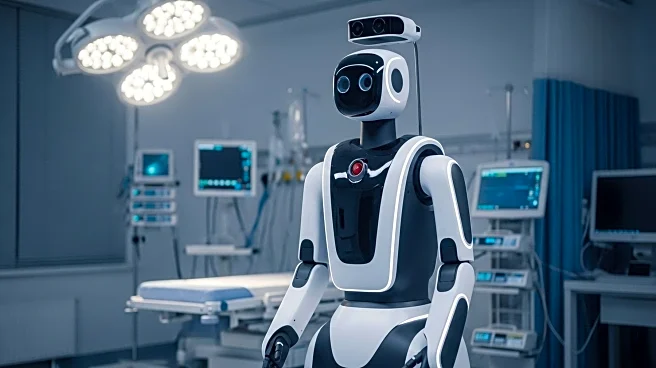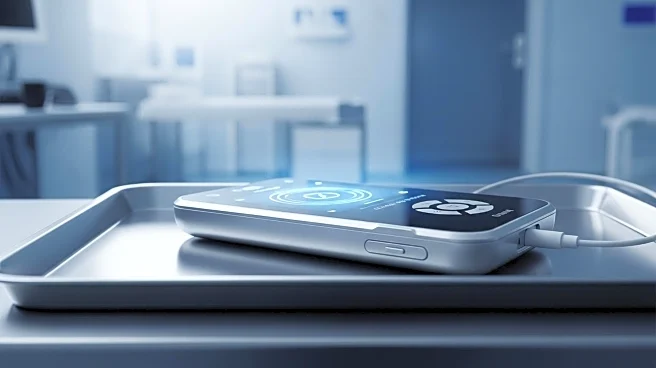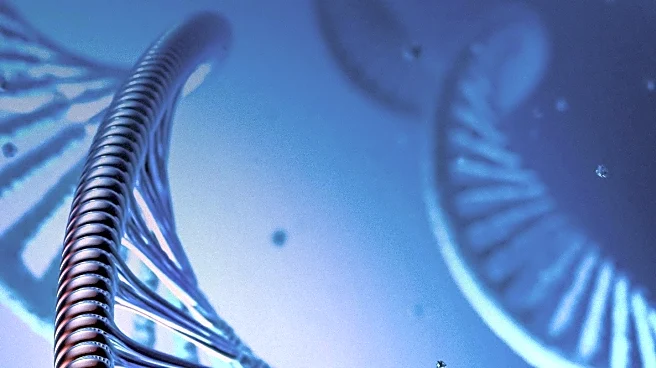What's Happening?
Recent research has introduced novel methods for monitoring neonatal cerebral hemodynamics using broadband continuous-wave near-infrared spectroscopy (bNIRS) and diffuse correlation spectroscopy (DCS). These techniques allow for real-time assessment of cerebral blood flow (CBF), oxygenation, and metabolism at the point-of-care. The study, conducted on neonatal piglets, utilized a hybrid bNIRS/DCS device to provide continuous measures of cerebral blood flow index (CBFi), deoxygenated hemoglobin (Hb), oxygenated hemoglobin (HbO2), changes in the oxidation state of cytochrome-c-oxidase (oxCCO), and tissue oxygen saturation (StO2). During stable intracranial pressure (ICP) periods, no significant changes in hemodynamic parameters were observed, indicating stable physiological conditions. The research highlights the potential of these techniques to offer comprehensive evaluations of cerebral health by simultaneously monitoring multiple physiological parameters sensitive to cerebral function.
Why It's Important?
The ability to monitor cerebral hemodynamics in neonates is crucial for early detection and management of neurological conditions. The integration of bNIRS and DCS provides a non-invasive, real-time method to assess critical parameters such as CBF and oxygenation, which are vital for understanding brain health and function. This advancement could significantly impact neonatal care, offering healthcare providers a powerful tool to monitor and respond to changes in cerebral physiology promptly. The implications extend to improving outcomes in conditions like traumatic brain injury, where elevated ICP can lead to pathological alterations in cerebral hemodynamics. By providing detailed insights into cerebral health, these techniques could enhance clinical decision-making and patient management strategies.
What's Next?
Further research and development are likely to focus on refining these techniques for broader clinical application. The next steps may involve clinical trials to validate the efficacy and reliability of bNIRS/DCS in human neonates. Additionally, efforts to integrate these technologies into standard neonatal care protocols could be pursued, potentially leading to widespread adoption in hospitals and clinics. Stakeholders such as medical device manufacturers and healthcare providers may collaborate to enhance the accessibility and usability of these monitoring systems. As the technology evolves, it may also be adapted for use in other patient populations, expanding its impact on healthcare.
Beyond the Headlines
The ethical considerations surrounding the use of advanced monitoring technologies in neonates must be addressed. Ensuring patient safety and data privacy are paramount as these techniques become more prevalent. Additionally, the long-term effects of continuous monitoring on neonatal development should be studied to prevent any unintended consequences. The cultural shift towards embracing technology in healthcare may also influence public perception and acceptance of these innovations. As healthcare systems increasingly rely on technology, the balance between human touch and technological intervention will be a critical discussion point.










